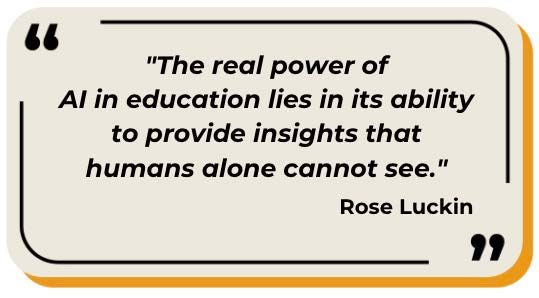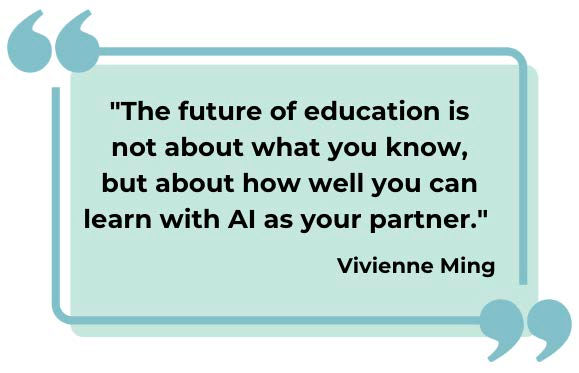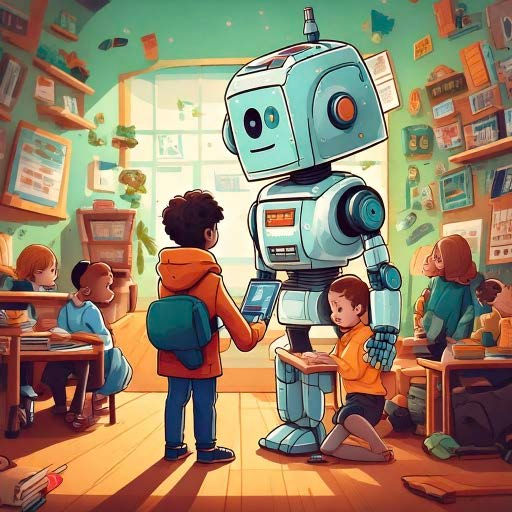AI: The New Electricity Powering Education - Unlocking Transformation in STEM
- PAST Foundation
- May 21
- 4 min read
By Jeff Schneider, PAST Foundation Teaching & Learning Innovator | <5 min read.

Artificial Intelligence (AI) is no longer a futuristic concept—it's a present-day reality reshaping the landscape of education. While AI began in the 1950s, it has garnered myriad headlines and raised the blood pressure of many teachers, administrators, and parents already in 2025. While much of the buzz today might focus on replacing human roles, the true potential lies in amplifying creativity, driving innovation, and improving learning outcomes. This transformation isn't limited to tech-heavy environments; it's a revolution accessible to any educator (and/or student) willing to explore its possibilities.
This article unpacks the transformative power of AI in education, highlighting how it enhances student engagement, fosters a dynamic learning environment, and prepares students for a future powered by intelligent technology. We'll delve into the key areas where AI is making a significant impact and hear from leading experts who are shaping this exciting new era."
AI: A Catalyst for Creativity and Innovation
Artificial Intelligence (AI) is revolutionizing education by not only enhancing how students learn but also by empowering them to think creatively and solve problems innovatively. As Fei-Fei Li, co-director of Stanford’s Human-Centered AI Institute, aptly puts it:

This amplification of creativity is evident in how AI enables students to explore complex concepts, simulate real-world scenarios, and experiment with innovative solutions across disciplines. Let’s dive into how AI is becoming an indispensable tool for fostering creativity in STEM and beyond.
Exploring Complex Concepts Through AI
AI tools are helping students tackle abstract or challenging STEM concepts by breaking them down into interactive and visual experiences. For example:
Data Visualization: AI-powered platforms like Tableau or Google Data Studio allow students to analyze large datasets and create compelling visualizations. These tools make it easier for students to identify patterns, trends, and insights that would otherwise be difficult to discern.
Scientific Simulations: Tools like Labster use AI to create virtual labs where students can conduct experiments in physics, biology, or chemistry. These simulations not only make learning safer and more accessible but also allow students to test hypotheses in ways that would be impossible in a traditional classroom setting.

Simulating Real-World Scenarios
AI enables students to immerse themselves in real-world challenges through simulations that mirror professional environments. This hands-on learning approach bridges the gap between theory and practice, preparing students for future careers.
Engineering and Design: Tools like Autodesk Fusion 360 use AI to assist students in designing and testing prototypes virtually. This allows learners to iterate quickly and refine their designs without the need for costly physical materials.
Environmental Science: AI-driven platforms like Climate Interactive allow students to model climate change scenarios, experiment with policy decisions, and understand their long-term impacts on the planet.
Example: Imagine a high school student interested in urban planning using an AI simulation to design a sustainable city. The platform provides real-time feedback on energy consumption, traffic patterns, and environmental impact, helping the student refine their design while learning critical STEM concepts.
Experimenting with Innovative Solutions
AI tools are also empowering students to become creators rather than just consumers of technology. By leveraging AI, learners can produce original works of art, music, or even code innovative solutions to pressing problems.
Creating Art with AI
Students can use platforms like DeepArt.io or RunwayML to create stunning digital artwork by blending styles or generating entirely new visual compositions. These tools teach creativity while introducing students to machine-learning concepts.
Composing Music with AI
AI-powered music tools like AIVA (Artificial Intelligence Virtual Artist) allow students to compose original pieces of music by selecting genres, instruments, and moods. This fosters musical creativity and demonstrates how algorithms can mimic human artistic expression.

Real-World Example: AI in Creative Education
At the Montour School District in Pennsylvania, educators have integrated AI into their STEAM (Science, Technology, Engineering, Arts, and Mathematics) curriculum. Students use tools like Google’s Teachable Machine to train simple machine learning models that recognize images or sounds. They then apply these models creatively, such as designing interactive art installations or composing music triggered by environmental sounds.
Why Creativity Matters in the Age of AI
As automation continues to replace repetitive tasks across industries, creativity remains one of the most valuable skills for the future workforce. By integrating AI into classrooms as a creative partner rather than a replacement for human ingenuity, educators can prepare students for roles that demand innovation and adaptability.
Call-to-Action: Start Amplifying Creativity Today!
Ready to bring the power of AI into your classroom? Explore these resources:
Labster Virtual Labs – Create immersive STEM simulations.
AIVA Music Composition – Start composing music with AI.
DeepArt.io – Experiment with creating digital art using machine learning.
Let’s inspire the next generation of creators by harnessing the transformative power of Artificial Intelligence!



Comments